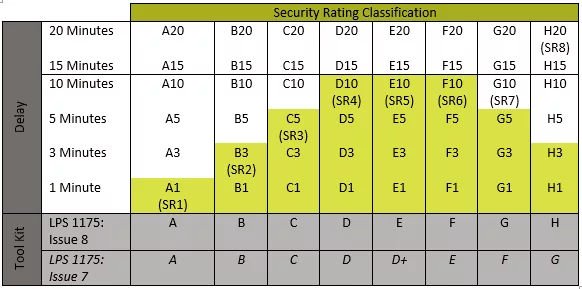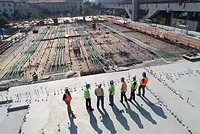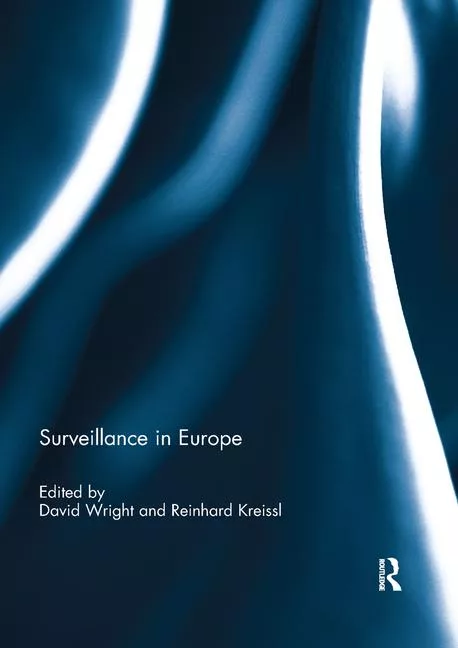The Thinking Behind Recent Changes in LPS 1175

What is LPS 1175? For those who have experience in the physical security market, LPS 1175 will be a familiar standard.
If you’re not familiar, the above article gives more detail, but essentially, LPS 1175 is a physical security standard that grades products from ‘SR’ (security Rating) 1 all the way up to ‘SR8’.
The purpose of the standard is to provide an independent assessment of the resistance of a product to attack, giving the specifier accurate information around the attack time and attack tools the product has been tested against.
What has changed?
On the 2nd January 2019, LPS 1175, Issue 8 was released.
This was a major change in the way the standard works – instead of working up in ‘SR’ levels where the attack time goes up every time the toolkit progresses, Issue 8 now allows for separate classification of these two factors.
Simply put, you can now specify both the attack time and the attack tools.
This creates a matrix of ratings rather than ascending list, as per the table, Security Rating Classification.
Whereas previously (under Issue 7) if you wanted a product that gave 5 minutes resistance, you would have to specify an SR3 rated product – even if you didn’t need resistance to Tool Kit C.
There are also some minor changes in tool categories, but clearly the key change to focus on here is fundamental way the grading structure has shifted.
What is the thinking behind these changes?
The reasoning behind this key change is actually very simple.
As alluded to above, a key challenge with Issue 7 of the standard was that a requirement for an attack time resistance then tied you to an attack tool category, and vice versa.
For example, if you are protecting a remote building against petty theft, you would require at least 5 minutes resistance due to the location of the building and how long it would take to respond to an attack.
However, as you’re only protecting against petty theft, you won't be needing to protect against toolkit D tools, which include a sledgehammer, a hooligan bar and a grinder!
As a result, you’d only really have two options:
- SR1/2 – under-specified on attack time resistance, but the appropriate tool category.
- SR4 – the appropriate attack time resistance, but highly over-specified on the attack tools the product can resist.
Under Issue 8 of the standard, it would be as simple as specifying an A5 or a B5 – resistance to tool category A or B for 5 minutes.
Another example of where this is useful is a high-value retail outlet in an urban environment: they’ll need resistance to grinders due to the professional and experienced attackers they’re likely to come up against, but due to the urban environment, may only need 2 minutes resistance, not 5 or 10.
Another key factor that Issue 8 brings is that specifiers can now much more easily layer the security on a building.
For example, if a security consultant assesses that a property requires 10 minutes resistance to toolkit B, two products with a B5 rating could then be used: a B5 door and a B5 roller shutter for example.
This provides a much more flexible system, and more accurately reflects the way properties are most effectively secured; the key to securing a property is in layering the barriers, as opposed to having one, extremely secure layer.
In conclusion, LPS 1175, Issue 8 is an important and much welcomed advance on Issue 7 and will provide both specifiers and manufactures alike a more realistic and therefore useful grading structure.
Looking for a reprint of this article?
From high-res PDFs to custom plaques, order your copy today!







